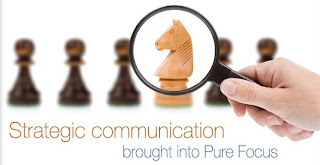“The single biggest problem in communication is the illusion that it has taken place.” ~George Bernard Shaw
In this age and time much has changed in the modes of communication. More information then ever before in the history of mankind is now available at the click of a button. Communication in this age and time acquires an altogether new definition.

Communication does not just happen. It must be organized, developed, and built. The first step in the process is to define a communications strategy. A good communications strategy allows you to exercise better control over your work and to frame the issues in a perspective other than research. A communications strategy removes doubt, emphasizes planning, and involves all the project participants in raising the visibility of the research.
An ABC of communication:
For communication to occur there must be:
A source of information — In this case, the source of information is you, with all your strengths and weaknesses, your knowledge and skills. It includes your research and the elements that make up that research.
One or more objectives — these objectives will vary depending on the target audience.
A message for each target audience — the message is the formulation of an idea. It includes data that have been processed and adapted to make sure they can be understood by your target audiences and it takes into account the information needs of the various groups you wish to reach. What information do you want to transmit? What needs to be known and understood? What behaviors are you researching? Considering these factors will help you compose the message.
Transmission channel — the channel is both the medium that you use to transmit your information and the understanding that you expect to achieve in those who receive the message.
A receiver (constituencies) — the receiver is the destination of your message. The receiver interprets the message according to his or her own perspective, knowledge, and logic. A good message takes this into account. To whom do you want to transmit your information? What groups, people, associations, projects, departments might be interested in the methods and outcomes of your research?
Example: when Vodaphone took over Hutch it was very effective in communicating it the change in the operations by changing its identity color from pink to red but it still uses it “pug” in all its advertise
 ments. Through this the company was trying to convey the message to its constituencies that only its internal operations are changed but it still provides the same service as Hutch did.
ments. Through this the company was trying to convey the message to its constituencies that only its internal operations are changed but it still provides the same service as Hutch did.PERSONAL EXPERIENCE: during the initial days of my MBA classes, we had to come to college even on Sundays to attend classes and this frustrated me and my friends. The reason for our frustration was not because we had to attend classes on Sundays but because we were not given a reasonable explanation for conducting classes even during our weekends. The management did not communicate with us strategically though the actual reason behind it was reasonable i.e. There was very little time left for the students from non commerce background to learn the basics before our lecturers from IUP came down to Bangalore.
RELATED LINKS:
http://www.work911.com/planningmaster/Communication_Planning_and_Communication_Strategy/
http://www.thebusinessedition.com/corporate-communication-strategy-in-the-new-media-corporate-blogs-394/
http://www.rcwob.doshisha.ac.jp/review/8_2/8_2_026.pdf
No comments:
Post a Comment